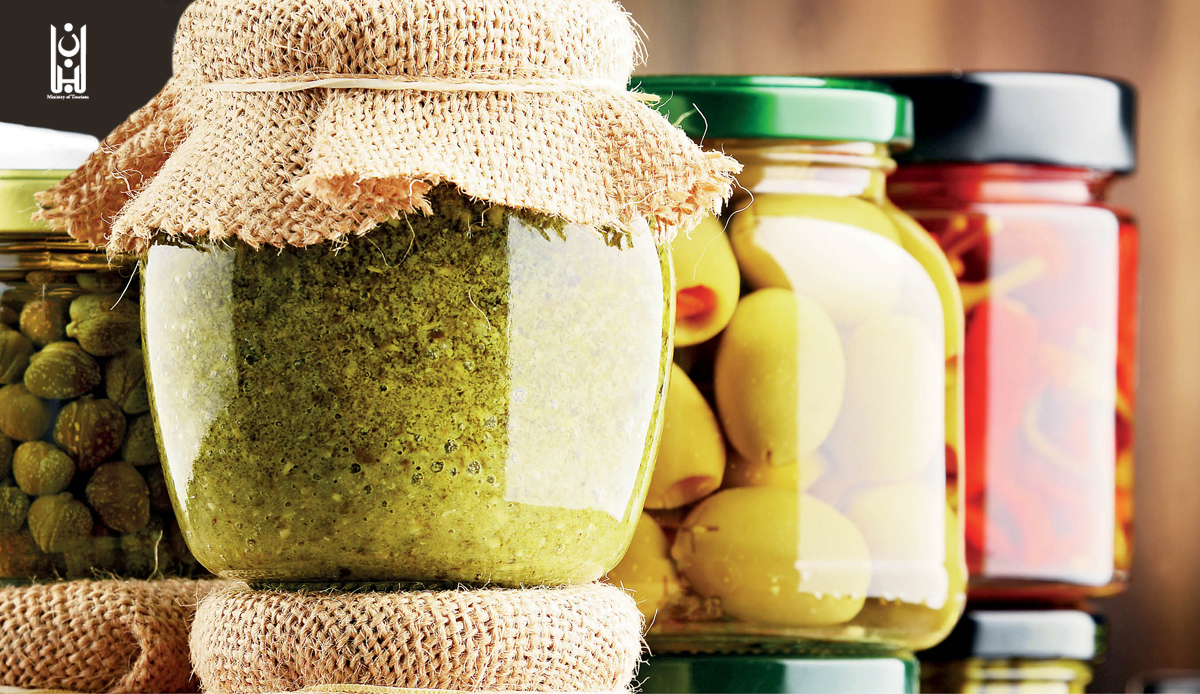LEBANON’S MOUNEH
Constituting a big part of Lebanese food culture, Mouneh is considered a sacred ritual among the people. Virtually every house in the country still practices some form of mouneh-making, and every house claims theirs is the best! To learn more about this age-old tradition, we speak with mouneh expert Set Balkis. And, with the help of the Ministry of Tourism, we bring you this guide that deals with all things mouneh.
A product of necessity
Mouneh is the practice of preserving food through various techniques (drying, pickling…etc.). This was common – even necessary – in the olden days due to the different seasons we had. Back then, the harsh cold seasons made fresh produce hard to come by. Thus, people had to find a way to make their spring and summer crops last through the winter to be able to survive.
Different techniques
Depending on the product, there are different ways to make provisions. The most common ways are:
- Drying: One of the most common ways many preserves are made not just in Lebanon, but the entire Arab world. Most notably in village houses, wicker baskets and trays hanging on the front porches or the roofs with produce ranging from fruits to herbs to grains (and even meat) is a common summertime sight.
- Pickling: Another way of preserving foods is pickling, the most common way being with the use of vinegar. This practice is used on various vegetables, including (but not limited to) cucumbers, onions, carrots, cauliflower, chili peppers, turnip and beetroot.
- Preserves: Another common summertime sight is large pots of mashed produce boiling over wood-fire, making all sorts of jams, jellies and pastes. These commonly include fruits such as apricots and figs as well as some vegetables such as tomatoes and chili peppers.
- Oil-Packing: This process is very similar to pickling, with oil substituting for vinegar. The most common items include dried labneh, dried kishk balls and eggplants (makdous).
- Some mouneh items are made in different ways. For instance, meat preserves (also known as awarma) is made by rendering the fat of the animal, then slowly cooking the minced meat and storing it (with very large amounts of rendered fat) in a jar. The meat preserves would then be added to hot stews and dishes during the winter.
Summertime affair
Mouneh was initially a way of preserving produce and crops, which are mostly in season in spring and summer. Thus, mouneh-making mainly takes place starting late spring until the end of summer, with some mouneh being made in the fall. Keeping in mind that some preserves are made during winter, and some all-year-round, here is a general breakdown of the mouneh making timeline:
- Spring: Making mouneh usually begins as early as late April – early May, where some jams (strawberry, for instance).
- Summer: Most mouneh is made during the summer, since most food is in season during this period. Also, the weather conditions are optimal for some processes such as sun-drying. Some examples of mouneh during this time include: apricot jam in June, peach jam in July, kishk starting mid-August until September, and eggplant makdous starting mid-August; however, Set Balkis claims that the makdous made in the last week of September is always the best batch of the year.
- Autumn: The most important mouneh item made in the fall is olive oil, which is arguably one of the most important ingredients in the entire Lebanese food culture. Harvest begins after the first rain of October and olive oil production could last until mid-November.
Local specialties
Though most mouneh is made everywhere in Lebanon, some regions shine brighter with their mouneh variety. Here are a few regions in Lebanon and the mouneh they are most famous for making:
- Baalbeck: Eggplant makdous, kishk, apricot preserves, goat labneh
- Byblos: Rose water, pomegranate molasses, verjus, apple vinegar, apple preserves, kishk
- Hammana: Anything with cherries
- Kesserwan: Cheese, notably goat cheese
- North Lebanon: Olive oil, sumac, zaatar
- South Lebanon: Burgul, zhourat, freekeh, zaatar, sesame, orange blossom water
An everlasting tradition
Making mouneh was originally a way to make food last longer and, more importantly, to have food around for the times of the year when nature isn’t as giving. Nowadays, modern technology has developed ways for us to have produce all-year-round. However, that hasn’t stopped families from preserving the tradition of making mouneh. Why? Because it’s become part of our culture. People have acquired a taste for the mouneh product itself, rather than the original produce it preserves. Could you imagine having that taouk sandwich with fresh cucumbers, for instance?
Moreover, mouneh is still a source of pride for many, as it is considered a sign that the person (mainly the housewife) is taking good care of their land and their house. Try going to any teta‘s without having her or her family tell you she makes the best jam in all of Lebanon.
Set Balkis’s tips
- Never store your mouneh in plastic containers. Always use glass, especially if you’re making something hot like jam.
- Make sure your containers are sterile. To sterilize your jars, boil them upside down and leave them to dry out in the sun. Make sure not to touch the inside after you boil them. Back in the day, jars were covered at the top with wax before they were closed to keep the food completely airtight.
- Always store your mouneh away from the sunlight.
- After you open it for the first time, a jar typically lasts 15 days at room temperature and around 3 months in the fridge.
- When it comes to oil-packed mouneh, make sure whatever is stored inside is completely submerged in olive oil at all times. If the oil level goes down after taking a few pieces of the product and exposes the product to air, simply fill the container with more olive oil.






